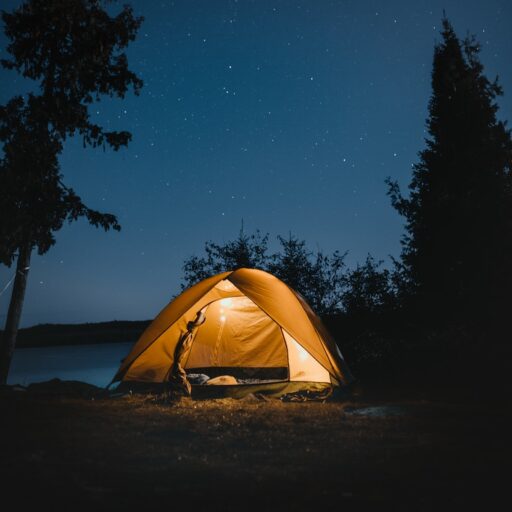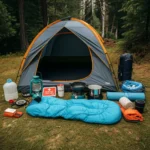Support our educational content for free when you purchase through links on our site. Learn more
What Should a First Aid Kit Include? [2024]
Accidents can happen at any time, whether you’re out camping, hiking, or even just at home. That’s why it’s crucial to be prepared with a well-equipped first aid kit. In this comprehensive guide, we’ll walk you through everything you need to know about what a first aid kit should include. From basic essentials to specialized items, we’ve got you covered. So let’s dive in and make sure you’re ready for any emergency!
Table of Contents
- Quick Answer
- Quick Tips and Facts
- Background: The Importance of a Well-Stocked First Aid Kit
- Essential Items for Your First Aid Kit
- Specialized Items for Specific Situations
- Building Your Own First Aid Kit
- FAQ
- Conclusion
- Recommended Links
- Reference Links
Quick Answer
A well-stocked first aid kit should include a variety of essential items to handle common injuries and emergencies effectively. These items include:
- Adhesive bandages of various sizes
- Sterile gauze pads and adhesive tape
- Antiseptic wipes or solution
- Tweezers and scissors
- Disposable gloves
- Pain relievers (e.g., acetaminophen, ibuprofen)
- Antihistamines for allergic reactions
- Cold packs for reducing swelling
- CPR mask or face shield
- Emergency blanket
- First aid manual or instruction booklet
- Emergency contact information
Remember, this is just a basic list, and you may need to customize your first aid kit based on your specific needs and activities. Let’s explore each item in more detail and cover additional specialized items you might consider adding.
CHECK PRICE on: Adhesive Bandages | Sterile Gauze Pads | Antiseptic Wipes | Tweezers | Disposable Gloves | Pain Relievers | Antihistamines | Cold Packs | CPR Mask | Emergency Blanket | First Aid Manual | Emergency Contact Information
Quick Tips and Facts
Before we dive into the details, here are some quick tips and facts to keep in mind when it comes to first aid kits:
- Check and replenish your first aid kit regularly: Make sure to check your first aid kit regularly and replace any expired items or items that have been used.
- Consider your specific needs: Depending on your activities and the number of people you’re responsible for, you may need to customize your first aid kit accordingly.
- Keep your first aid kit easily accessible: Store your first aid kit in a location that is easily accessible and known to everyone in your household or camping group.
- Educate yourself: Take the time to familiarize yourself with the items in your first aid kit and learn basic first aid techniques. Consider taking a first aid and CPR course for more in-depth knowledge.
Now, let’s delve into the details and explore each item you should consider including in your first aid kit.
Background: The Importance of a Well-Stocked First Aid Kit
Before we jump into the specific items, let’s take a moment to understand why having a well-stocked first aid kit is so important. Accidents and injuries can happen unexpectedly, and having the right supplies on hand can make a significant difference in providing immediate care and potentially preventing further complications.
A well-stocked first aid kit allows you to quickly respond to common injuries such as cuts, burns, sprains, and insect bites. It can also be a lifesaver in more serious situations, providing you with the tools and resources to stabilize a person’s condition until professional medical help arrives.
Essential Items for Your First Aid Kit
-
Adhesive bandages: These are essential for covering small cuts, blisters, and abrasions. Make sure to include a variety of sizes to accommodate different wounds.
-
Sterile gauze pads and adhesive tape: These are used to clean and dress larger wounds. The sterile gauze pads help absorb blood and other fluids, while the adhesive tape secures the gauze in place.
-
Antiseptic wipes or solution: These are used to clean wounds and prevent infection. Look for antiseptic wipes that are individually packaged for convenience.
-
Tweezers and scissors: Tweezers are handy for removing splinters or foreign objects from the skin. Scissors are useful for cutting tape, gauze, or clothing.
-
Disposable gloves: It’s important to protect yourself from potential contamination when providing first aid. Disposable gloves create a barrier between you and the injured person.
-
Pain relievers: Include over-the-counter pain relievers such as acetaminophen or ibuprofen to help manage pain and reduce fever.
-
Antihistamines: These are useful for treating allergic reactions caused by insect bites, stings, or allergies. They can help alleviate symptoms such as itching, swelling, and hives.
-
Cold packs: Cold packs or instant ice packs are essential for reducing swelling and relieving pain caused by sprains, strains, or minor burns.
-
CPR mask or face shield: In case of a cardiac emergency, a CPR mask or face shield provides a barrier between you and the person you’re performing CPR on, reducing the risk of infection.
-
Emergency blanket: Also known as a space blanket, an emergency blanket helps retain body heat and provides insulation in case of hypothermia or shock.
-
First aid manual or instruction booklet: It’s important to have a reference guide that provides step-by-step instructions on how to handle common injuries and emergencies.
-
Emergency contact information: Include a list of emergency phone numbers, including local emergency services, poison control, and your healthcare provider.
Specialized Items for Specific Situations
In addition to the essential items, you may want to consider adding specialized items to your first aid kit based on your specific needs and activities. Here are a few examples:
-
EpiPen: If you or someone in your group has a severe allergy, carrying an EpiPen can be life-saving in case of an allergic reaction.
-
Splint: A splint can be useful for immobilizing a broken bone or stabilizing a sprain until medical help is available.
-
Burn gel: For camping or outdoor activities, including a burn gel can help soothe and treat minor burns caused by hot surfaces or open flames.
-
Tick removal tool: If you’re spending time in areas with a high tick population, having a tick removal tool can help safely remove ticks and reduce the risk of tick-borne illnesses.
Remember, these are just a few examples, and you should tailor your first aid kit to your specific needs and activities. Consider the potential risks and hazards you may encounter and add items accordingly.
Building Your Own First Aid Kit
While pre-packaged first aid kits are readily available, you may prefer to build your own kit to ensure it meets your specific requirements. Building your own first aid kit allows you to customize the contents and include items that are most relevant to your needs.
Here are some additional items you might consider adding to your DIY first aid kit:
- Medical adhesive tape
- Burn dressings
- Eye wash solution
- Instant glucose
- Safety pins
- Disposable thermometers
- Splinter removal tools
- Medical gloves
- Irrigation syringe
- Emergency whistle
- Waterproof matches
- Hand sanitizer
- Insect repellent
- Sunscreen
Remember to regularly check and replenish your first aid kit to ensure that all items are up to date and in good condition.
FAQ
What are 10 items in a first aid kit?
In addition to the essential items mentioned earlier, here are 10 additional items you might consider including in your first aid kit:
- Medical adhesive tape
- Burn dressings
- Eye wash solution
- Instant glucose
- Safety pins
- Disposable thermometers
- Splinter removal tools
- Medical gloves
- Irrigation syringe
- Emergency whistle
Read more about “How to Prepare Your Body for Camping …”
What are 20 items in a first aid box?
To build a comprehensive first aid kit, here are 20 items you might consider including:
- Adhesive bandages
- Sterile gauze pads and adhesive tape
- Antiseptic wipes or solution
- Tweezers and scissors
- Disposable gloves
- Pain relievers
- Antihistamines
- Cold packs
- CPR mask or face shield
- Emergency blanket
- First aid manual or instruction booklet
- Emergency contact information
- EpiPen
- Splint
- Burn gel
- Tick removal tool
- Medical adhesive tape
- Burn dressings
- Eye wash solution
- Instant glucose
What should be included in first aid?
A well-stocked first aid kit should include a variety of essential items to handle common injuries and emergencies effectively. These items include adhesive bandages, sterile gauze pads, antiseptic wipes, tweezers, scissors, disposable gloves, pain relievers, antihistamines, cold packs, a CPR mask or face shield, an emergency blanket, a first aid manual or instruction booklet, and emergency contact information. Additionally, you may want to consider adding specialized items based on your specific needs and activities.
What are 5 items in a first aid kit and their uses?
Here are 5 essential items you should include in a first aid kit and their uses:
- Adhesive bandages: Used to cover small cuts, blisters, and abrasions.
- Sterile gauze pads and adhesive tape: Used to clean and dress larger wounds.
- Antiseptic wipes or solution: Used to clean wounds and prevent infection.
- Tweezers and scissors: Used to remove splinters or foreign objects from the skin and cut tape or gauze.
- Disposable gloves: Used to protect yourself from potential contamination when providing first aid.
Conclusion
A well-stocked first aid kit is an essential item for any camping trip, outdoor adventure, or even just for everyday emergencies at home. By including a variety of essential items, you can be prepared to handle common injuries and emergencies effectively. Remember to customize your first aid kit based on your specific needs and activities, and regularly check and replenish the contents to ensure everything is up to date.
So, whether you’re hitting the trails or staying close to home, make sure you have a well-equipped first aid kit by your side. You never know when it might come in handy!
Recommended Links
- Camping Preparation Guide
- Camping Food and Nutrition
- Camping Gear Basics
- Camping Gear Reviews
- How to Prepare Your Body for Camping 2024
CHECK PRICE on: Adhesive Bandages | Sterile Gauze Pads | Antiseptic Wipes | Tweezers | Disposable Gloves | Pain Relievers | Antihistamines | Cold Packs | CPR Mask | Emergency Blanket | First Aid Manual | Emergency Contact Information





